All dogs have their origins in different kinds of environments; some come from hot, some moderate, and others from freezing regions. This is how we got so many amazing breeds with different kinds of coats. Cold-weather dogs often have thick double coats, and they live their best lives when we are cozying up in our blankets.
You might be worried about your dog’s ability to withstand cold climates or frost for multiple reasons. Maybe you live in a place where it stays snowy and harsh throughout the year.
Or maybe you know there are going to be those frosty days, and you want a dog fit for outdoor activities or accompanying you in chores outdoors during such times.
In any case, if you’re looking for a dog with coats and paws that can withstand extreme cold and snowy surfaces, we’ve got you covered. Here are our top 9 favorite dog breeds that can cope with frost-covered streets just fine.
Dog Breeds with Frost-Resistant Paws
1. Alaskan Malamute
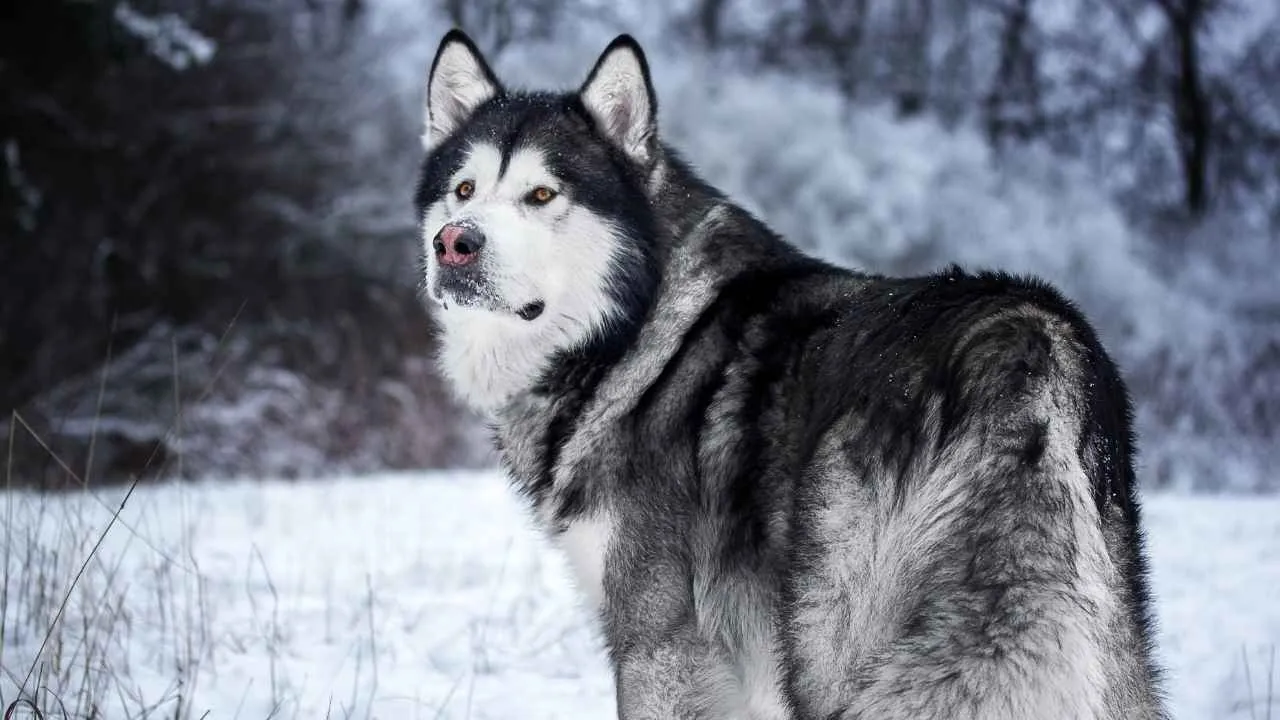
Alaskan Malamutes were originally bred by the Mahlemut Inuit tribe as sled dogs to help haul heavy loads across the challenging Alaskan lands.
These sturdy and muscular dogs were developed specifically to withstand frost-covered arctic territories and make great companions for owners who live in cold or snow-covered environments.
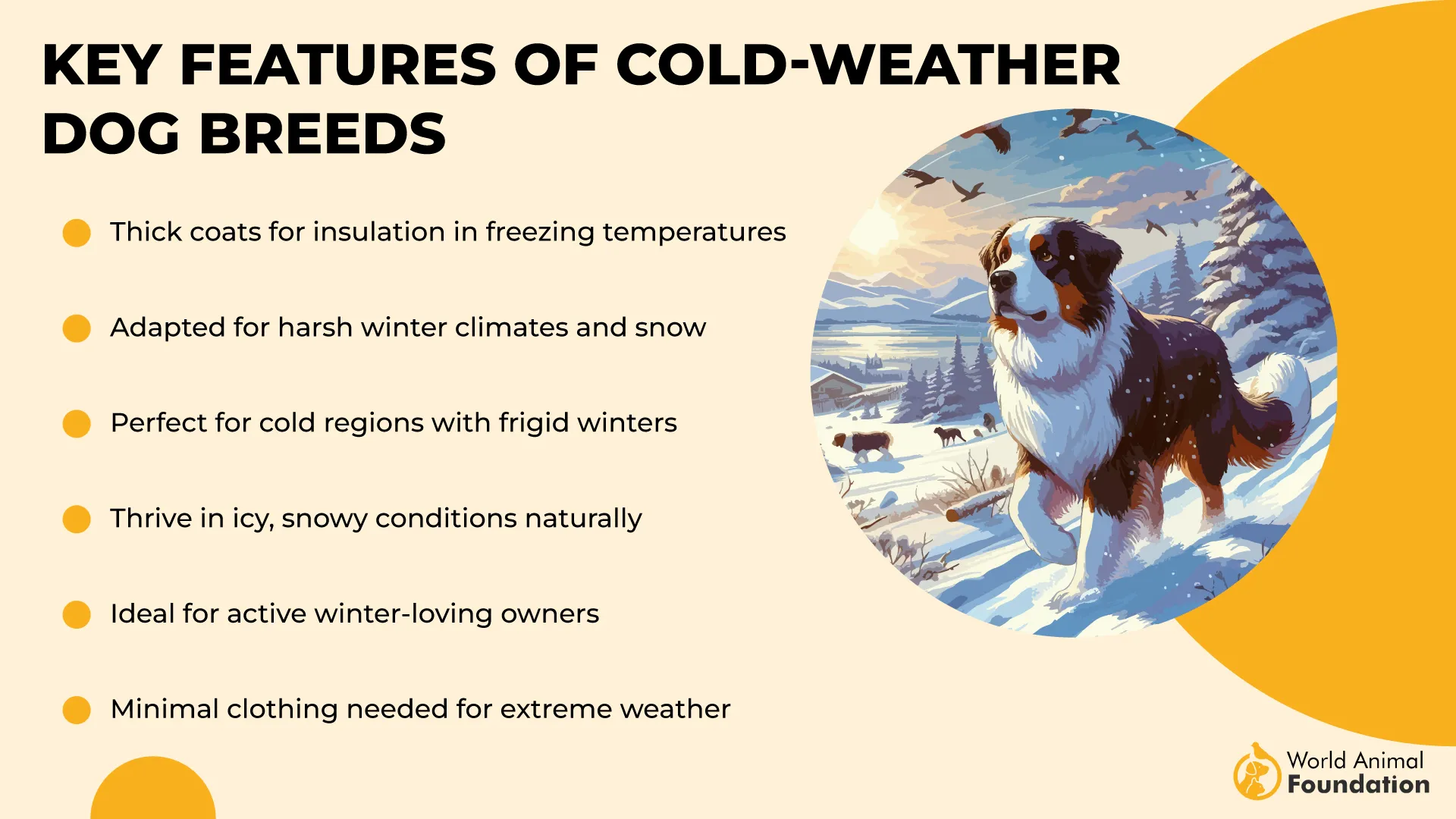
Alaskan Malamutes are larger than Siberian Huskies, another popular sled dog breed they’re often confused with. These canines weigh up to 85 lbs and stand up to 24 inches tall. Their size gave them an edge in pulling sleds and enduring harsh winds and hailstorms.
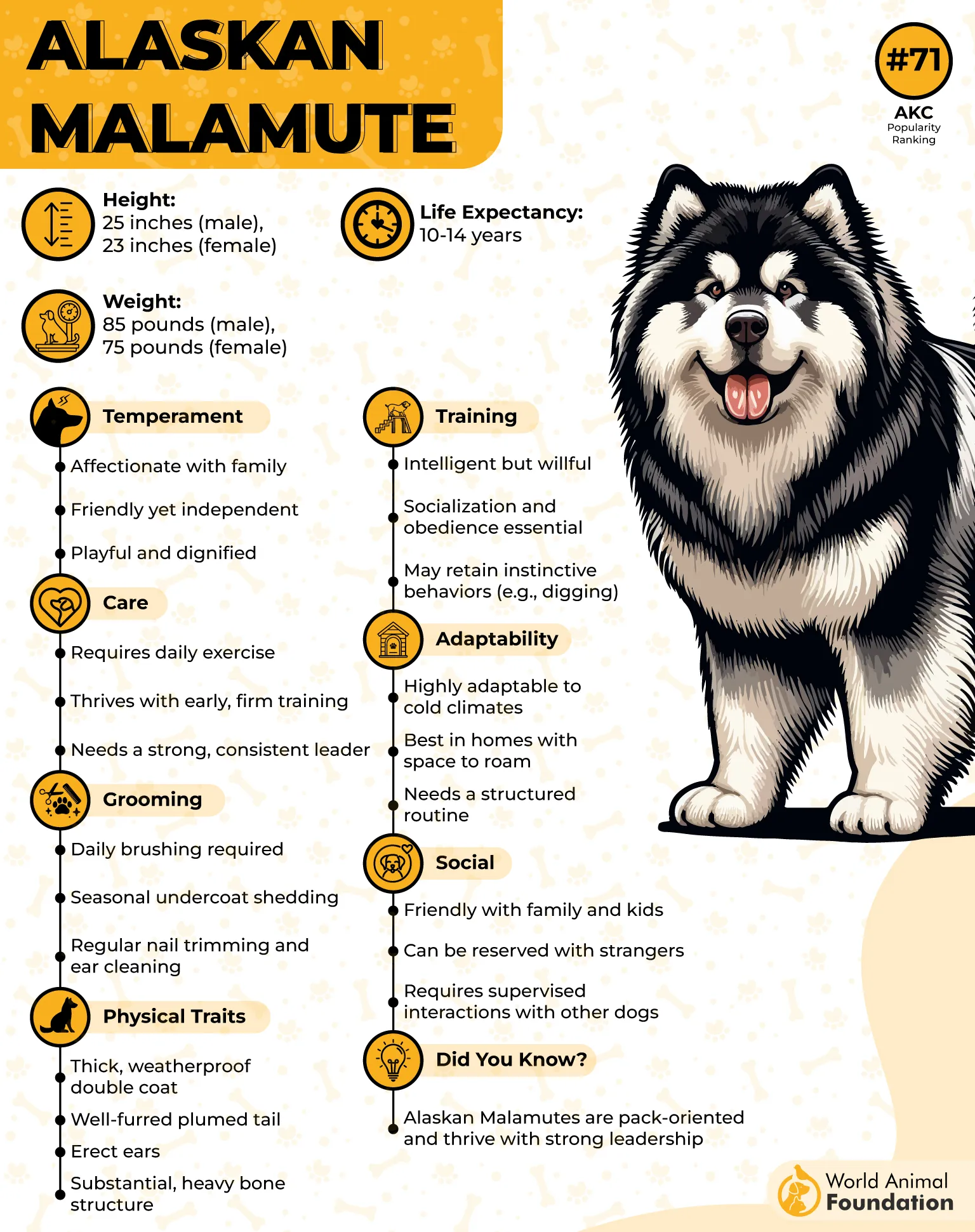
Loved for their enchanting looks and gentle temperament, these dogs are well-suited for families who love winter adventures outdoors.
2. Great Pyrenees
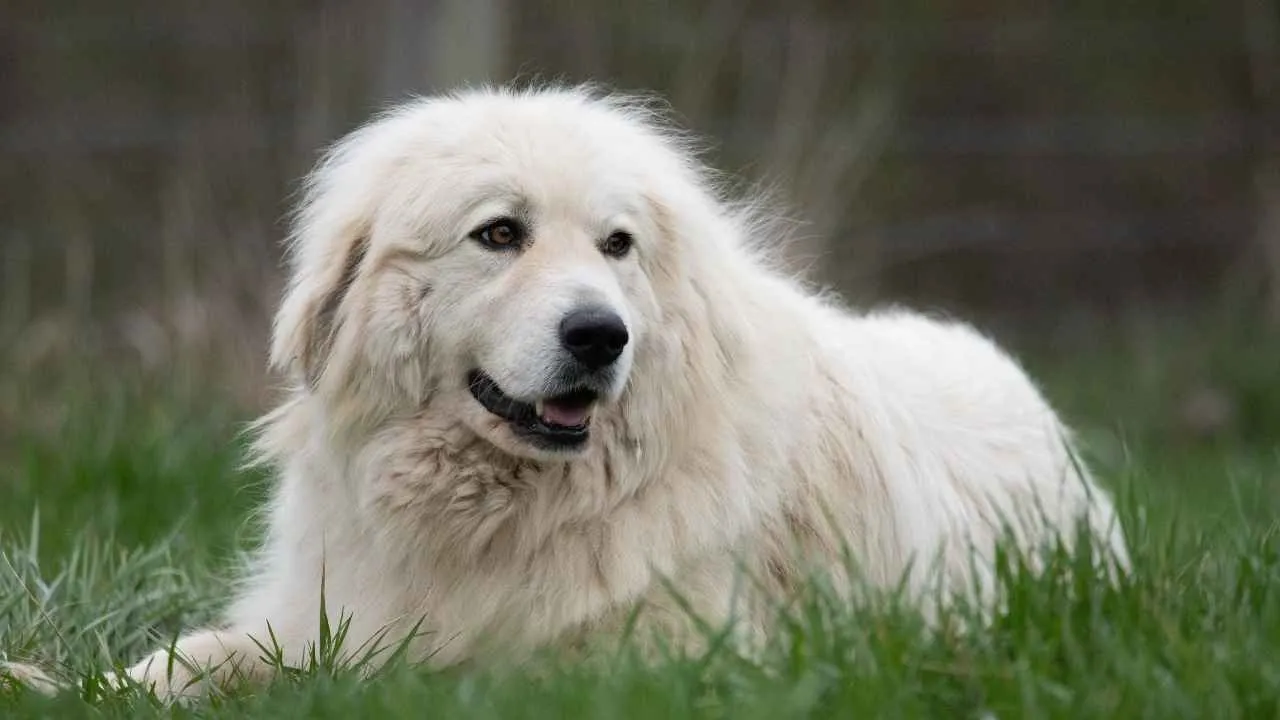
Great Pyrenees is a beautiful dog breed originally bred to guard livestock in the mountains of the Pyrenees. These daredevils were considered ideal to protect the herd against predators like wolves and bears, while scaring away thieves as well.
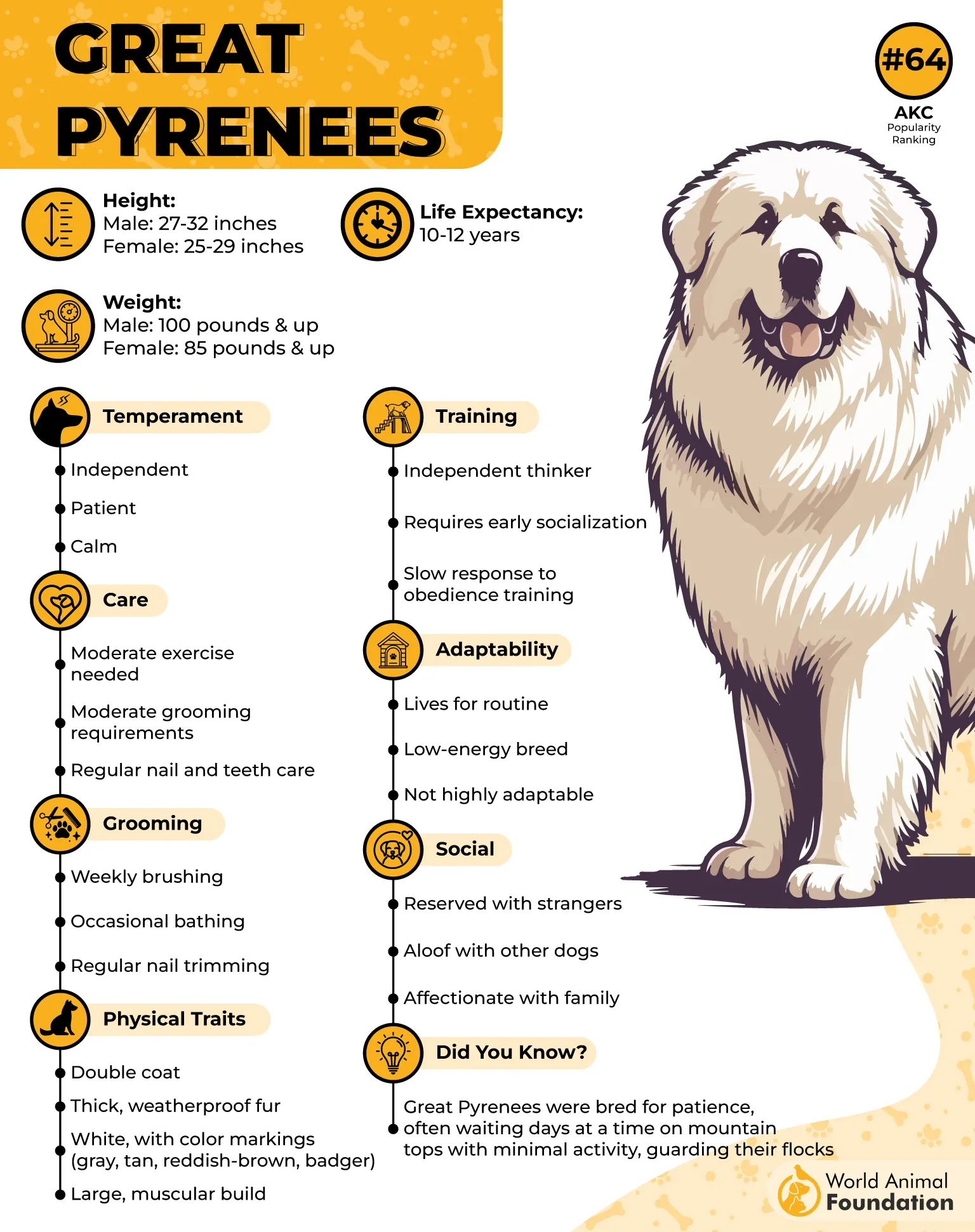
These massive dogs can thrive in freezing temperatures with their splendid, white, thick double coat. With a weight ranging from 85 to 150 pounds, they can grow 25 to 32 inches tall. These gentle giants are amiable family pets with a calm but protective nature.
One of the best dog breeds for cold weather, the Great Pyrenees will happily take a romp outside with you even when it’s snowing. Their inner coat gives them insulation against the chilly air and helps them stay warm.
3. Saint Bernard
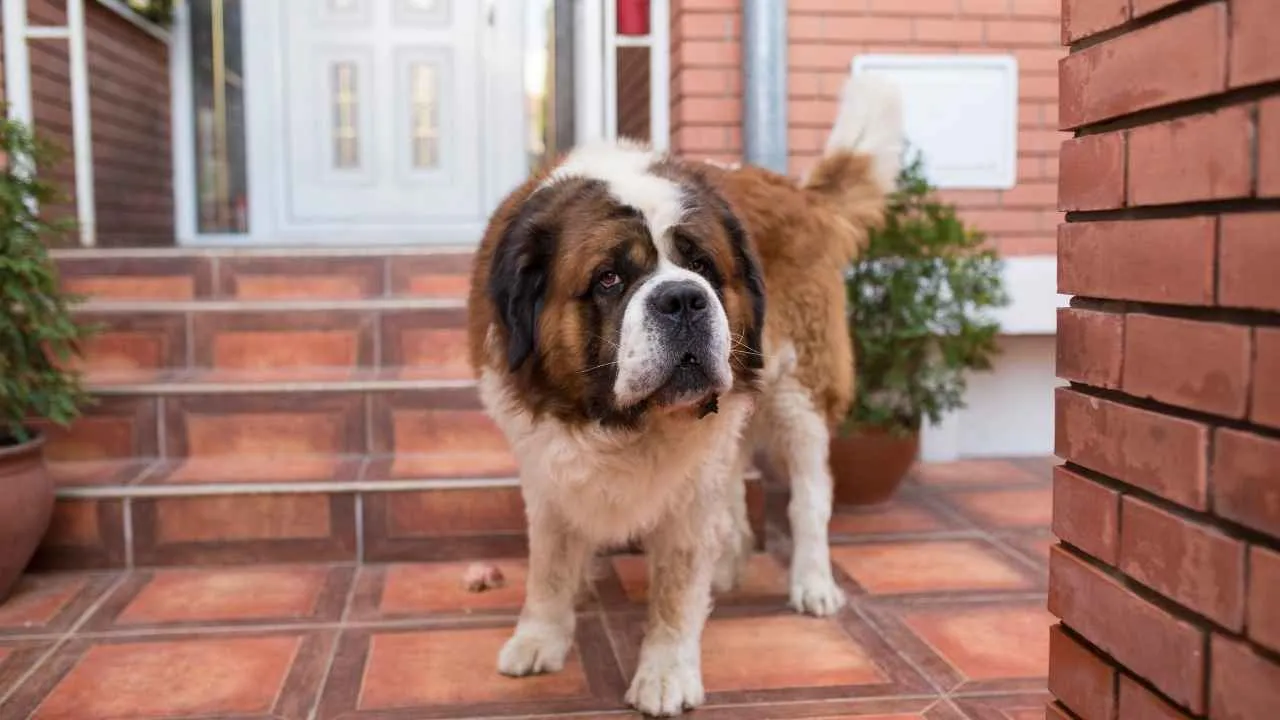
Saint Bernards are gentle giants with a peaceful and doting personality. They can be up to 30 inches tall and up to 140 pounds heavy. As big dogs, they might be a little suspicious of strangers are first. They’ll also be more comfortable in families with older, well-behaved kids.
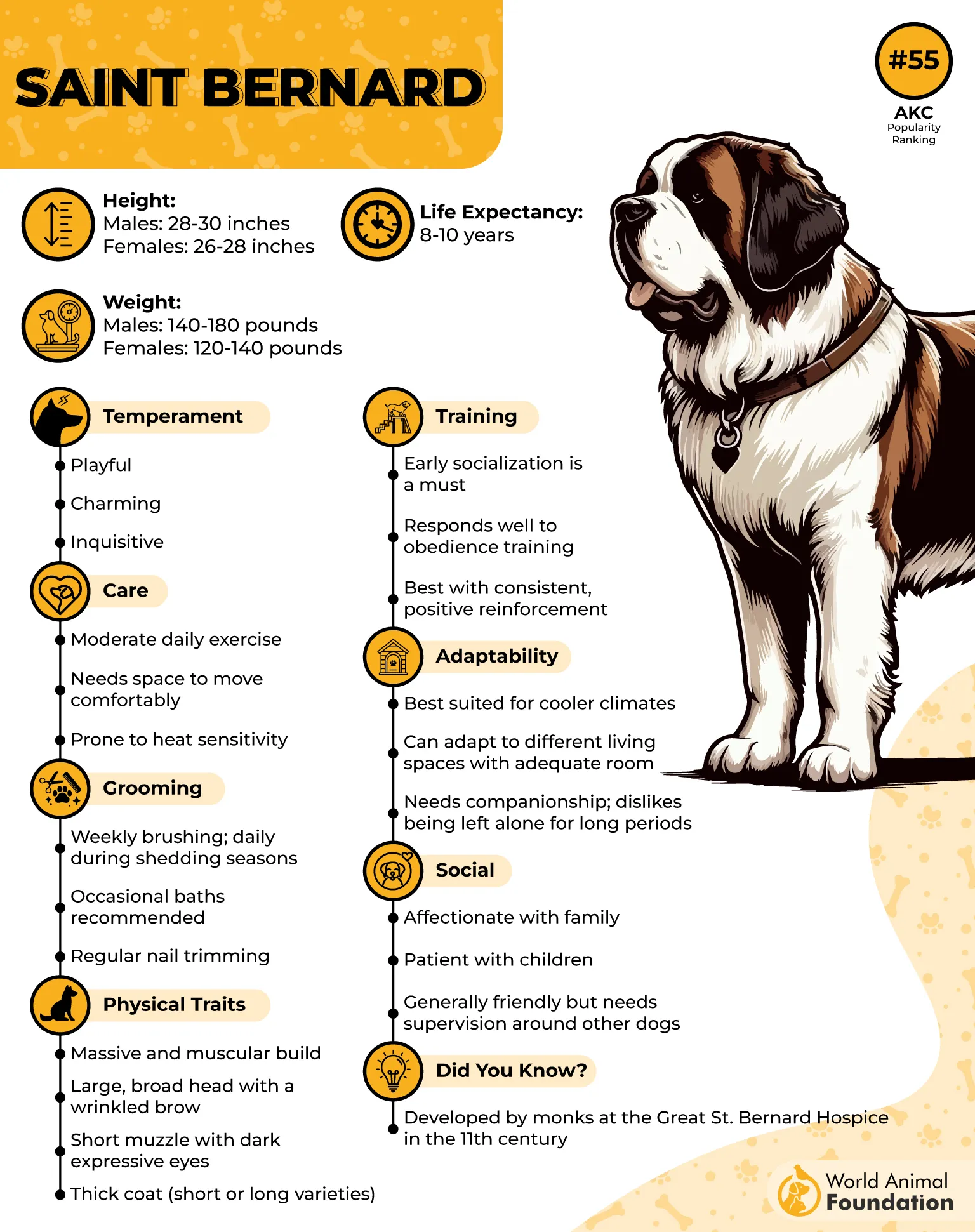
Saints have a remarkable cold temperature tolerance due to their Swiss Alps origins. They were bred by monks as gurad dogs and were used to search for lost travelers. Impressive, yeah? Apart from their dense double coats, their huge build and wide chests help them thrive outdoors in cold weather.
While their strong, frost-resistant paws help them move across snowy plains, their fast metabolism helps them stay warm by generating more heat than many other dogs.
4. Siberian Husky
These medium-sized dogs are members of the Spitz family and have a charming, wolf-like appearance. Siberian Huskies were bred by the Chukchi tribe of the Chukchi Peninsula of Siberia. They were used to pull sleds in the chilly temperatures of Siberia due to their thick winter fur and endurance.
Sibes have a leaner and fox-like appearance compared to the Alaskan Malamutes. Though smaller than the Alaskans, their ability to enjoy romping in chilly temperatures is remarkable.
Their fascinating coat doesn’t just look visually appealing; it also makes them a well-suited dog for active families who enjoy outdoor activities in winter.

According to PetMD, Sibes can get bored with a sedentary lifestyle; so don’t hit pause on those winter walks, as their inner, woolly coat insulates them in cold weather. Their outer coat is made up of coarse hair that’s water-resistant and helps repel moisture.
5. Samoyed
Samoyeds are famous for their heart-melting smiles and white, fluffy, thick fur. Sammies are great dogs for frigid temperatures as their long, dense coat keeps them from catching a cold or frostbite. Sammies are feisty and fun-loving pets for families and love to play around with their humans.
These cold-temperature dogs thrive in winter and will need some care if you live in warmer climates. These working dogs are renowned for their background in pulling sleds and staying by their owners’ sides in freezing conditions.
Sammies make high-energy, protective, and somewhat vocal pets. Their fluffy white coat can blend in perfectly with the snow-covered environment, giving a whole new meaning to snow-white. These smiling cotton balls look like your magical companions through the winter wonderlands.
6. American Eskimo Dog

You can’t hold a cloud in your arms, but cuddling with an Eskie will give the same vibe. American Eskimo dogs are beautiful, fluffy white canines originally bred as multipurpose farm dogs. Nowadays, they’re loved as gentle family dogs and are popular for their thick, frost-resistant double coat.
According to the American Kennel Club, Eskies are not an American breed but descendants of the German Spitz breed. They come in different sizes and are highly adaptable to winter conditions due to their thick coats.
Eskies are one of the high-energy dog breeds and have an alert nature. Watch their feisty side come out when the temperature drops. Excellent companions to active owners, Eskies can trot across snowy surfaces without hurting their paws.
7. Bernese Mountain Dog
Bernese Mountain dogs hail from the Swiss Alps and are gentle-looking dogs that thrive in the winter months. They are strong working dogs with a protective nature and were used for herding cattle.
Bernese are known for their loyal and friendly nature and make great pets for families with kids. Their soft undercoat and rough, dense outercoat work together to keep them warm in frosty conditions. Their strong paws were made for the mountains and can endure cold, harsh surfaces perfectly.
8. Newfoundland
Newfoundlands are gentle giants hailing from Canada. These snow dogs are perfect companions for people who have to stay outdoors for extended periods of time in freezing conditions.
Newfies are gentle and fun-loving pets that won’t let you go out alone in cold, harsh weather, as well. Their coat saves them from the elements with its double layers, and gives it buoyancy and warmth in icy waters. Their webbed feet also give them the ability to be awesome swimmers.
Despite their size, their agile legs and strong, big paws help them romp over frost like they’re made for it.
9. Keeshond
Keeshonds are a famous snow dog breed originally developed in arctic regions. Their fluffy, thick double coat helps them wander around in snow for hours without getting frostbite. They’re not huge dogs; males can grow up to 18 inches and females can be 17 inches tall.
Despite being smaller dogs, they have big energy and even a larger personality. If you want a friendly, alert, and spunky pup that can survive in cold climates or just take a walk outside in snow, adopt a Keeshond.
These pups are quite adaptable to the lifestyles of active owners and love hopping around in wider spaces. If walking in freezing temperatures is your thing, this dog has frost-resistant paws that will happily follow you.
Conclusion
While all these dogs thrive in colder months, it’s important to know how to best take care of them. Even with their thick double coats, dogs prone to shedding will some some sort of dog jackets in cold weather.
Dogs who do well in winter and cold climates might struggle when the temperature soars. Make sure to keep your cold-weather dog breeds hydrated and cool during summer and take precautions against heat stroke.


